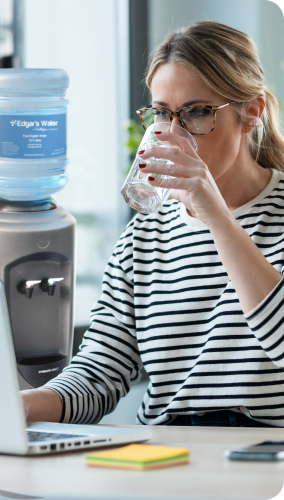Environmental Impact Calculator
See the positive
change you can make.
When you use Culligan, you’ll help the environment.
Select a product to see how many resources you save.
Based on the results of a 2023 ISO 14040-44 conforming, independent expert panel-reviewed life cycle assessment (LCA) of representative products of each of Culligan’s seven key product families, compared to relevant alternatives, such as single-use plastic bottles or boiled tap water. The cumulative impact reductions provided by this tool were calculated by determining the annual potential impact reduction compared to the alternative product (e.g. single-use bottled water, boiled tap water) for one unit of each representative Culligan product, and multiplying this result by the estimated number of the Culligan products used annually, based on Culligan product usage data. This calculation assumes that 100% of the alternative usage to the Culligan product is in the form of the comparative product (e.g. single-use bottled water, boiled tap water), as opposed to a mixture of the comparative product and other alternatives, such as alternative multi-function taps, filtered pitchers, bottled water coolers, etc. The extrapolation of the cumulative impact reductions was not reviewed by the independent panel, but was based on the methodology, calculations, and assumptions of the independent panel-reviewed baseline LCA. A copy of the expert-panel-reviewed LCA report is available upon request.
Data presented is based on selected product region
- Based on the same volume of water consumed with Culligan products and with the most relevant comparator, such as 500 ml PET plastic water bottles, or water boiled in a kettle.
- Based on the total weight of plastic used in 500 ml PET plastic water bottles, minus the total weight of plastic used in Culligan product and packaging.
- Based on the carbon impact of the distance (shown above) driven by gasoline (petrol) powered passenger vehicle with an average fuel efficiency of 22.9 miles per gallon (which is equivalent to 27.5 miles per imperial gallon in the UK, or 10.27 liters/100 km in Europe), as calculated by the US EPA’s Greenhouse Gas Equivalencies Calculator (https://www.epa.gov/energy/greenhouse-gas-equivalencies-calculator)
- Based on the carbon-impact of a 9 watt light-emitting diode (LED) bulb operated in Australia. The comparative impact to an LED bulb operated in countries other than Australia may vary somewhat, due to differences in the carbon emissions intensity of the electrical grid in different countries.
- Based on the carbon impact of the number of hours flown by Boeing 747-400 (used for long distance international flights), based on Carbon Independent https://www.carbonindependent.org/22.html
- Based on the carbon removal benefit of a medium growth coniferous (evergreen) or deciduous (non-evergreen) tree, planted in an urban setting and allowed to grow for 10 years, based on US EPA https://www.epa.gov/energy/greenhouse-gases-equivalencies-calculator-calculations-and-references#seedlings
